| Umělec 2005/3 >> Germany in Contemporary Chinese Art | Просмотр всех номеров | ||||||||||||
|
|||||||||||||
Germany in Contemporary Chinese ArtUmělec 2005/301.03.2005 Leng Lin | china | en cs de es |
|||||||||||||
|
The Reunification of Germany eliminated the most significant ideological antagonism from contemporary history. Socialism and capitalism no longer stand pitted against each other; in the new reality the former Eastern bloc countries are in fact interconnected with the West. Retrospectively, socialism became an abstract ideal, and at the same time capitalism is taking its toll. The historical internal conflicts of ongoing ideological conflicts in Germany are familiar to Chinese artists and they can easily relate to them. This historical context is unavoidable and present for contemporary Chinese artists if they come into contact with Germany, whether it be geographically or mentally.
The Chinese artist Qin Yufen, who travels between Berlin and Beijing, is hardly unknown in German art circles. Her interactive Volkstheater (2002) took place in a village church in former East Germany. The artist drew from both Socialist Realist and capitalist-psychical experiences from the region. She cooked a typical Chinese canteen meal for the church – as if the setting were a Communist commune – and she presented slides from Beijing. Simultaneously, she organized with the people of the town an exchange of traditional Chinese clothes for other items of clothing. As members of what was once the extended family of Socialism, China and East Germany had similar experiences associated with the revolution. Qin Yufen gave a lot of space to both sides in this work, to be able to visualise and go beyond these common experiences. The artist exploits the immediateness of mundane life to facilitate participation to allow for exchange and transcendence. Chinese daily life would encourage the inhabitants of Eastern Germany to reflect on their own history. And this new context, freely revived memories without the pressure of the old system. Yin Xiuzhen presented a work along the same lines in the geographically and culturally different empirical space of Beijing. In 1998, the artist created in the former embassy of East Germany a site-specific art installation Visumsabteilung (Visa Department). After German reunification, the former East German embassy became the new German embassy’s visa department. Yin Xiuzhen sounded out the environment first as an application, and then decided to create the project before a portion of the building would be torn down to be rebuilt. Yin Xiuzhen used the untouched equipment of the Visa department and covered it with a layer of dry cement powder, which transformed the space to look like prematurely abandoned ruins. The quality of the material used highlighted the significant content of the installation – in a dry state, cement is soft and has no potency as dust, but combined together with water it turns hard as stone. The cement powder covered all lingering traces of Socialism and simultaneously coated over any indications of developing capitalism. The work of Yin Xiuzhen functions on various levels. She takes advantage of the medium of the German history of a single location to communicate the way of life particular to China. Moreover, the work inquires about the consequences of the taking down and reconstruction of old buildings and their associated social structures. The work also reflects the ideological system of censorship; the visa department is just an administrative miniature of the defunct socialist censorship system—as long as seekers do everything correctly, they can travel, if not, the world will remain closed. German reunification had a specific meaning for China thanks to parallel social and cultural-political structures. Chinese artists therefore paid lots of attention to Germany. The rapid development of China soon transformed artistic interest toward greater international platforms. In 2000, for example Yin Xiuzhen used various cities as subjects for Tragbare Städte (Portable Cities), a series of works in suitcases, which included Berlin—however this time as a component, not as the focus of her work. The work of Song Dong from Beijing presents an intentional interstice of two places. For the performance Song Dong geht um die Stadt herum (Song Dong Walks Around the City, 1996-97) Song Dong used a pedometer to measure the important city walls in three various countries: the fortress in Suwan in South Korea, the Bejing city wall and the Berlin wall. Song Dong allotted one week for each wall. For the Berlin wall, starting from the Brandenburg Gate, he measured 54 hours, 48 minutes and 36 seconds; it took him 325,174 steps to walk all the way around the former wall. Song Dong used his own body as a medium, and with his own steps created imaginary bridges. Through the juxtaposition of three remote cities he has provoked an ambiguous political, cultural and historical relation and he opens up the subjects of history, ideology, old realities and rebuilding of a new reality. After 1989, China, in contrast to economically struggling Eastern Germany, began to burst forth as an economic power. Mammon, and the opinion that a strong economy is the highest good, launched a period of enthusiastic demolition and rebuilding unprecedented in this five-thousand-year-old culture. In this context, Song Dong, with his ancient method of walking on foot, expressed a “journey into oneself.” In that journey, he incorporated three various cultural, political and economical contexts into discourse, presenting the individual as the main factor of history, although hidden behind the city walls and the number of steps and dates of time. And who knows if, in the end, the individual won’t vanish over the course of social evolution.
01.03.2005
Рекомендуемые статьи
|
|||||||||||||
|
04.02.2020 10:17
Letošní 50. ročník Art Basel přilákal celkem 93 000 návštěvníků a sběratelů z 80 zemí světa. 290 prémiových galerií představilo umělecká díla od počátku 20. století až po současnost. Hlavní sektor přehlídky, tradičně v prvním patře výstavního prostoru, představil 232 předních galerií z celého světa nabízející umění nejvyšší kvality. Veletrh ukázal vzestupný trend prodeje prostřednictvím galerií jak soukromým sbírkám, tak i institucím. Kromě hlavního veletrhu stály za návštěvu i ty přidružené: Volta, Liste a Photo Basel, k tomu doprovodné programy a výstavy v místních institucích, které kvalitou daleko přesahují hranice města tj. Kunsthalle Basel, Kunstmuseum, Tinguely muzeum nebo Fondation Beyeler.
|






















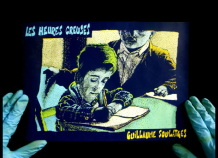




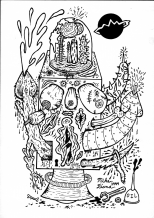
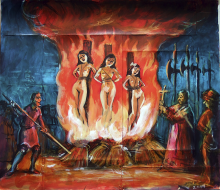
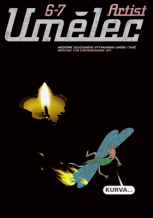
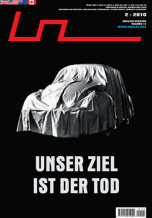


 We Are Rising National Gallery For You! Go to Kyjov by Krásná Lípa no.37.
We Are Rising National Gallery For You! Go to Kyjov by Krásná Lípa no.37.
Комментарии
Статья не была прокомментированаДобавить новый комментарий